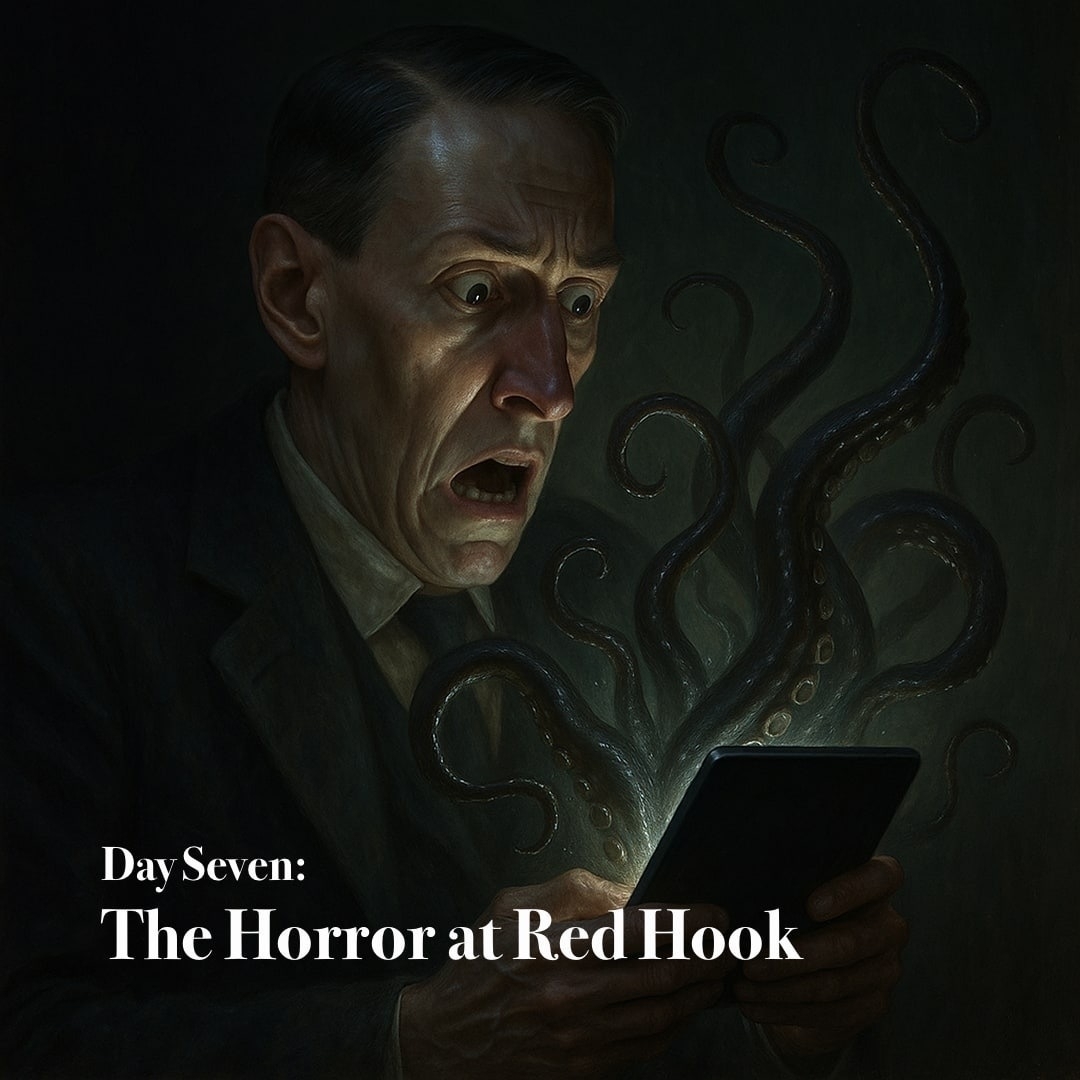The Horror at Red Hook

A wiser soul than mine would long since have sought the refuge of slumber, yet here I linger, fingers trembling at my keyboard beneath the wan radiance of a swollen harvest moon. Through my window its argent light spills—cold, pitiless, eternal—illuminating the pages of that most noxious of narratives, “The Horror at Red Hook.” A saner man would not summon such phantoms before surrendering to dreams, for sleep is the kingdom of their dominion. Yet folly, ever my companion, bids me read on.
As I trace H. P. Lovecraft’s ink-born nightmare, my thoughts drift unbidden to Alan Moore’s Providence, that modern scripture of abomination. Therein, Moore, grim artificer, has pried open Lovecraft’s veiled suggestions and laid bare the festering subtext beneath. What the master hinted at, Moore makes flesh; what was whispered, he commands to howl. I confess it is a dreadful brilliance, an exegetic blasphemy I can neither abhor nor resist.
Those who cherish the eldritch might find Providence still obtainable, thirty American dollars, a trivial sum to purchase madness. And so I write, half-aware that the moonlight upon my desk grows ever paler, as if leached by some unseen tide, and that perhaps, before dawn, wisdom itself may desert me forever.
On to our tale…
In the haunted annals of New York there lies the tale of Detective Malone, whose soul was blasted by the nameless terrors of Red Hook. It was there, among the crumbling facades and festering slums, that he beheld the decline of Robert Suydam, a recluse whose wasted frame grew perversely youthful even as the streets filled with whispers of abduction. A raid unearthed only cryptic sigils, yet the true horror came when Suydam, newly wed, was found lifeless upon a ship, his bride’s flesh mangled by claw-marks of no earthly beast. Pursuing the mystery, Malone descended into unhallowed caverns where sacrificial rites were enacted and Suydam himself was given foul resurrection. Though rescued from the ruins of that blasphemous den, the detective emerged forever marked, his dread of looming edifices a scar left by the lurking menace that yet broods over Red Hook.
Scholars have sought the tale’s worldly roots. Marc Beherec discerns in St. George’s Syrian Catholic Church, raised by Ryneer Suydam, the germ of Lovecraft’s fiction, seeing in its metamorphosis a mirror of both neighborhood decay and Robert Suydam’s hideous transformation. Lovecraft, soured by his sojourn in New York and by the mingled throngs he abhorred, drew his occult trappings from the dry scholarship of the Encyclopædia Britannica and the weird imaginings of E. Hoffmann Price. Yet the tale, steeped in xenophobic bile, has long been scorned by critics. Lin Carter named it “literary vitriol,” and S. T. Joshi judged it among Lovecraft’s weakest works. Still, its malign influence endures, for it gave rise to new visions of horror: Victor LaValle’s The Ballad of Black Tom, which reclaims the tale from its prejudice, and Alan Moore’s The Courtyard and Providence (reader beware, Moore render Lovecraft’s subtext into text, making it a harrowing experience) , which echo its sinister cadences in modern guise.